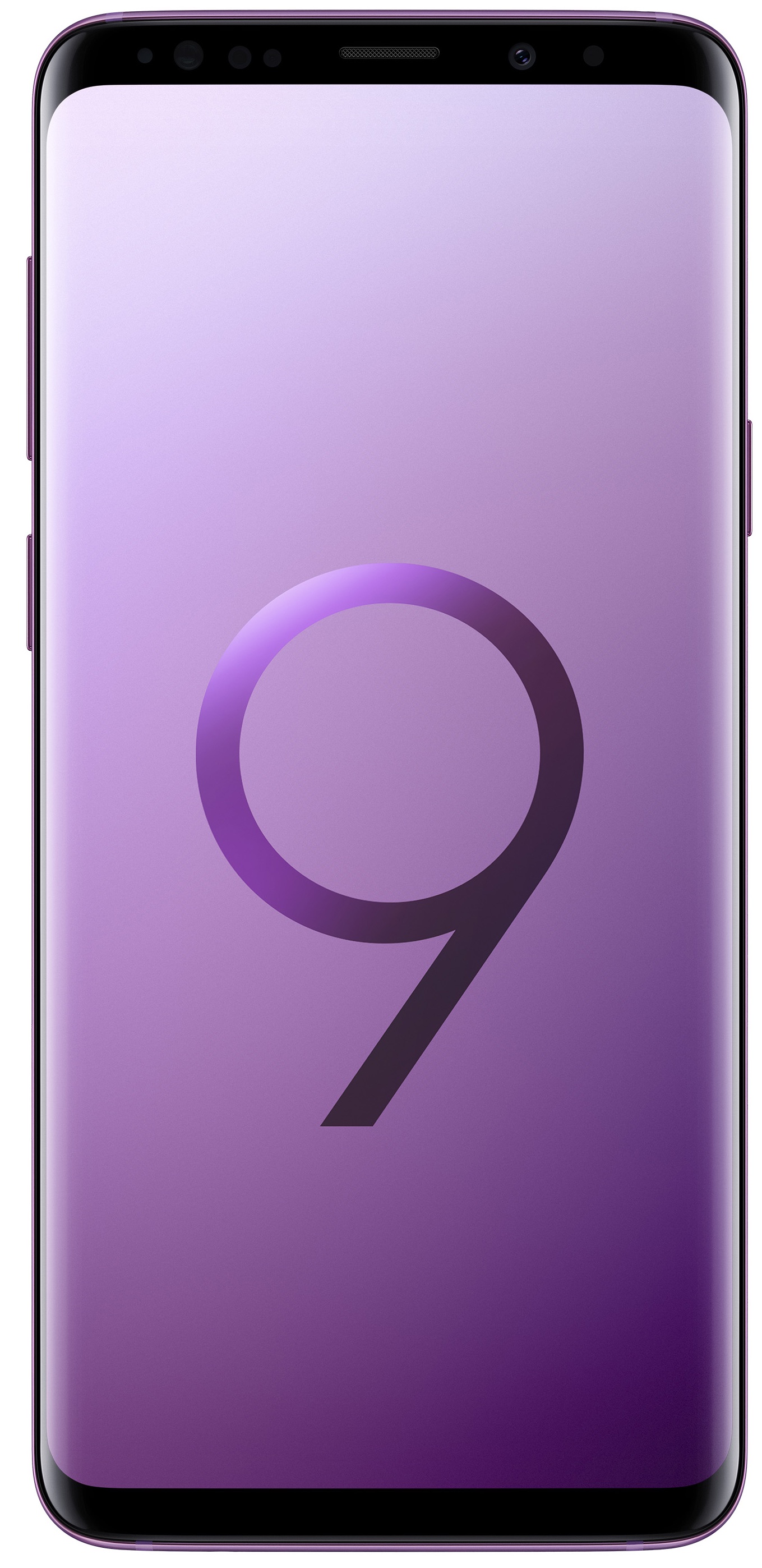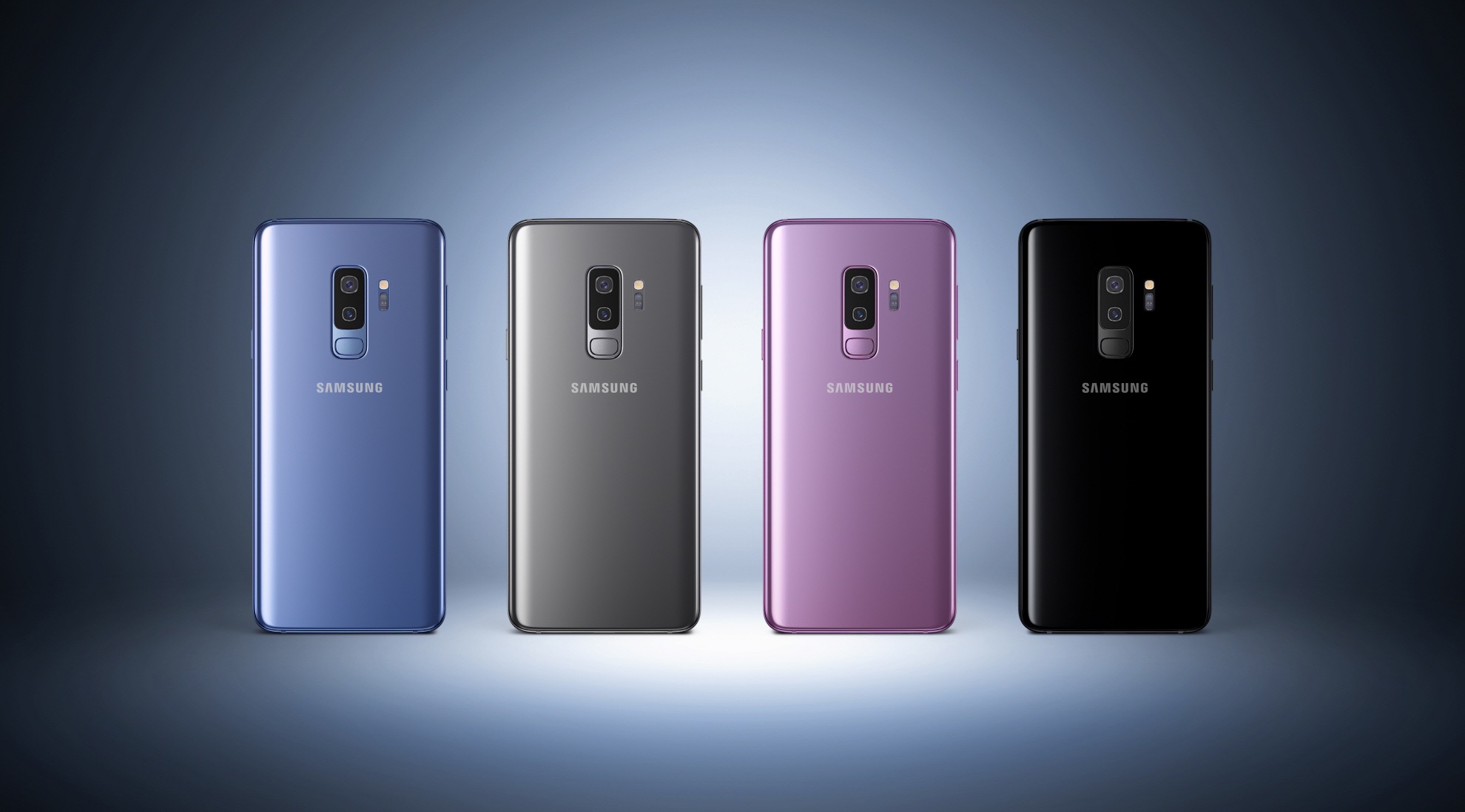
Ahead of Mobile World Congress, Samsung yesterday announced its new 5.5-inch Galaxy S9 and the 6.2-inch Galaxy S9 Plus smartphones features an 18.5:9 aspect ratio Infinity Display.
These are Samsung’s official successors to last year’s Galaxy S8 lineup and the South Korean conglomerate’s first flagship smartphones in 2018.
The new phones have retained Samsung’s praised industrial design of the previous generation and come in the usual stealthy black finish (called Midnight Black), plus Coral Blue, a new hue Lilac Purple and the internationally available Titanium Gray.

In terms of speeds and feeds, US models run Qualcomm’s ten-nanometer Snapdragon 845 octa-core chip (four high-performance 2.7 GHz processing cores paired with four power-saving 1.7 GHz ones). Models sold in Europe and other international markets come outfitted with Samsung’s similarly specc’d homegrown Exynos processor.
The smaller model uses 4GB of RAM and the Plus-sized Galaxy features 6GB of RAM. There’s a 3,000 mAh battery inside Galaxy S9 and a 3,500 mAh cell in the Plus model.
Both devices include 64GB/128GB/256GB of onboard storage (expandable to 400GB via SD cards) and optically-stabilized, variable aperture cameras out the back. Galaxy S9 Plus features a dual-lens setup with a wide-angle 12-megapixel variable aperture sensor (F1.5/F2.4) paired with a 12-megapixel telephoto shooter with a fixed aperture (F2.4)
Yes, these are actually your first smartphones in the world featuring a variable-aperture lens that’s capable of physically switching between a wide open aperture of F1.5 that lets huge amount of light in and the narrower F2.4 aperture for sharper-looking images.
The new camera system can shoot slo-mo video in 1080p at 240 frames per second, just like iPhone X. However, it one-ups iPhone X with a brand new super slow-motion mode that shoots in 720p at a whopping 960 frames per second. It spreads 0.2 seconds of video to a longer six seconds, but doesn’t record audio and is limited to a 0.2-second capture session.

To help people capture such a short fragment of time, Samsung’s Camera app has been redesigned (you now swipe between camera modes, like on iPhone) whilst gaining an automatic detection feature that looks for motion inside a user-defined square area, triggering a 0.2-second capture at 960 frames per second when sudden movement is detected.
Other camera features include hardware-based noise reduction, enhanced HDR capabilities, object recognition (similar to Google Lens), the ability to live-translate signs and more.
https://www.youtube.com/watch?v=FI2CpNdaJAc
Samsung also brought out its version of Animoji, called AR Emoji.
Using the eight-megapixel (F1.7) front-facing camera to capture the user’s facial muscle movement, it applies that data to various 3D characters. You can then send your creation as a GIF animation to other people, much like Animoji but with one major difference—the new Galaxies achieve AR Emoji without requiring infrared-based depth mapping.
The shape of the new phones, their buttons and other external features are the same as on the previous-generation Galaxy S8 series. The rear-mounted fingerprint reader has been relocated beneath the camera, making it a tad easier to reach with your finger.
It’s worth mentioning that the Galaxy S9 series supports additional biometric capabilities, like iris scanning and 2D facial recognition, with a new feature called Intelligent Scan automatically using the best biometric sensor for any given situation.
https://www.youtube.com/watch?v=5_-NKRVn7IQ
The stereo speakers tuned by AKG are a bit louder than before (one is at the bottom of the phone and the other is in the earpiece, like with the iPhone 7/8/X series). This is also the first Samsung smartphone to support Dolby’s surround sound Atmos standard, something no Apple device supports out of the box.
The latest Galaxies have retained several popular features from the Galaxy S8 series, such as USB-C, wireless charging (compatible with WPC and PMA), fast wired charging compatible with QC 2.0, Bluetooth 5.0, LTE Cat.18, Wi-Fi 802.11ac, IP68-rated water and dust resistance and—yes—the headphone jack.

Both phones run Android 8.0 Oreo.
Check out the full tech specs on Samsung’s website.
The new 5.8-inch Galaxy S9 (Quad HD+) and 6.2-inch Galaxy S9 Plus (Super AMOLED) smartphones are scheduled to go on sale on March 16, with pre-orders starting March 2. Galaxy S9 is priced at $720 and Galaxy S9 Plus at $840 in the United States.
What are your thoughts and feelings on the new Galaxies?
Let us know down below in the comments!